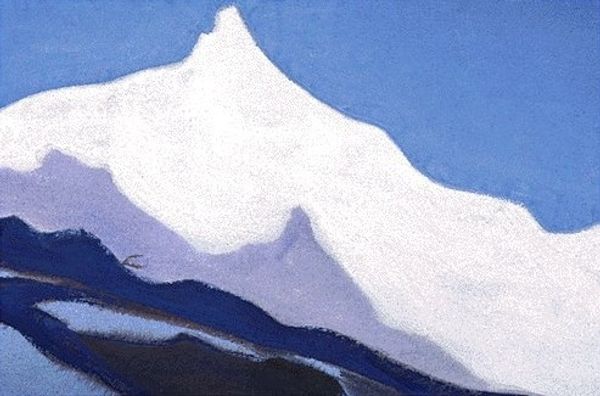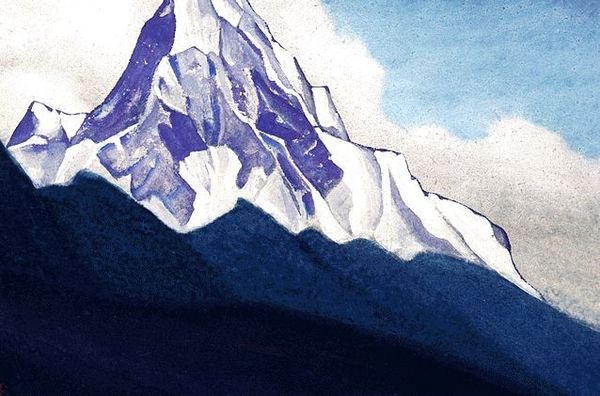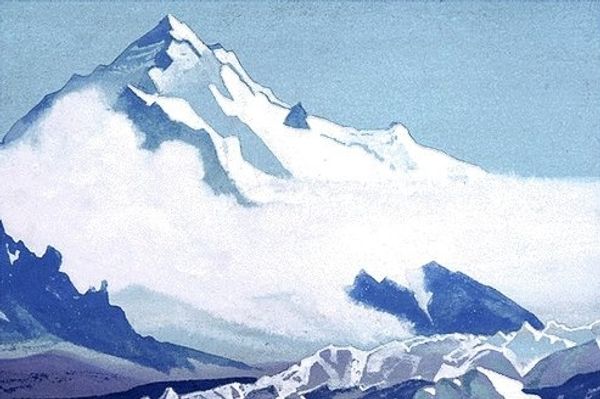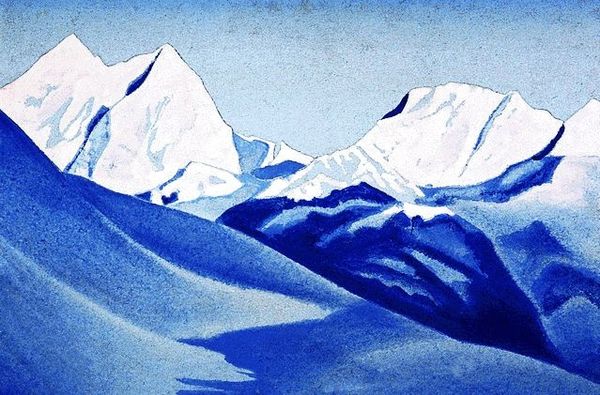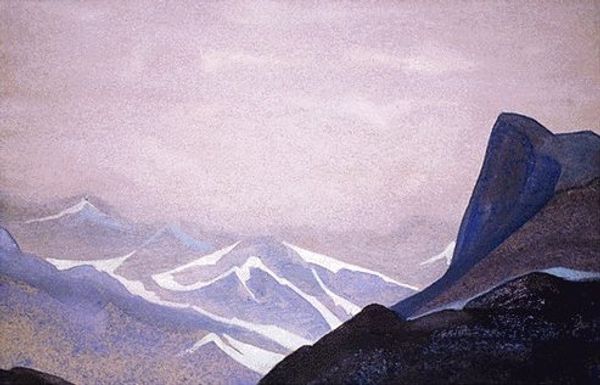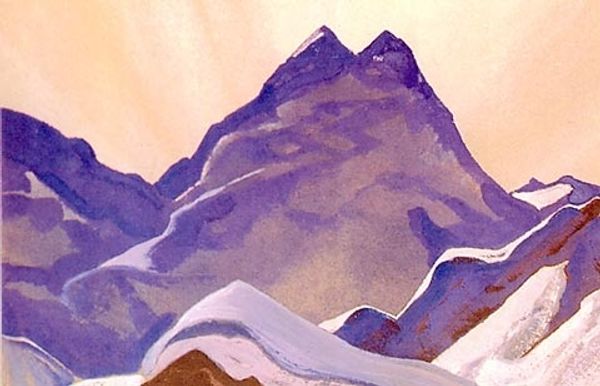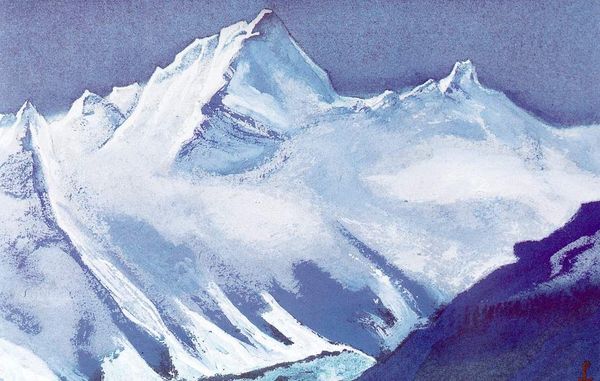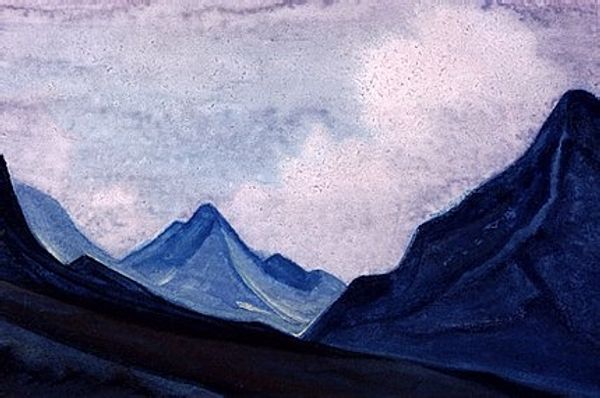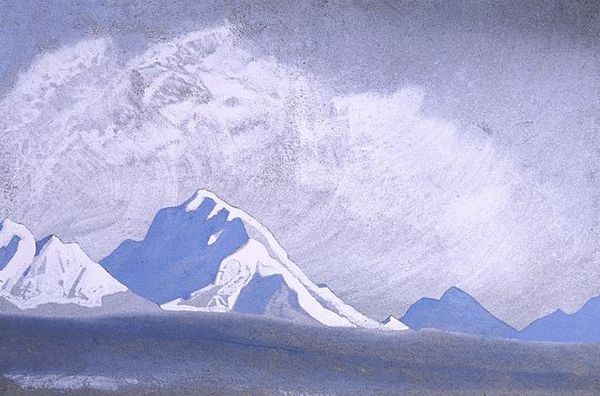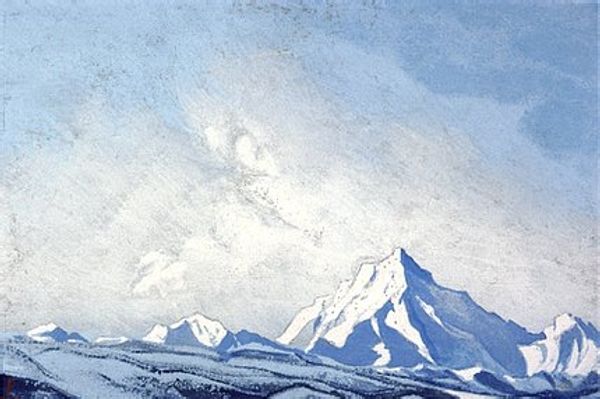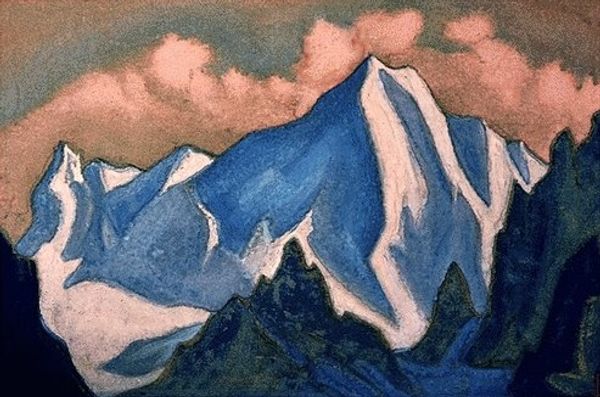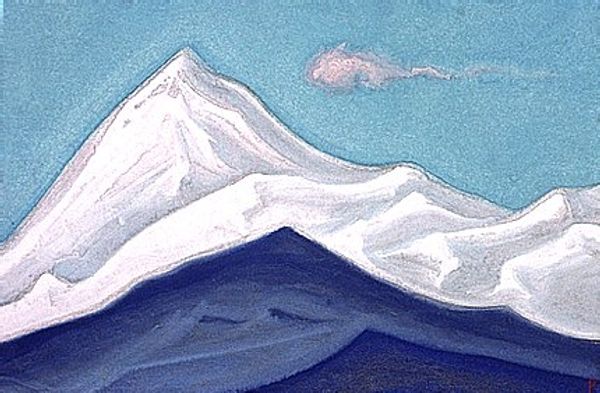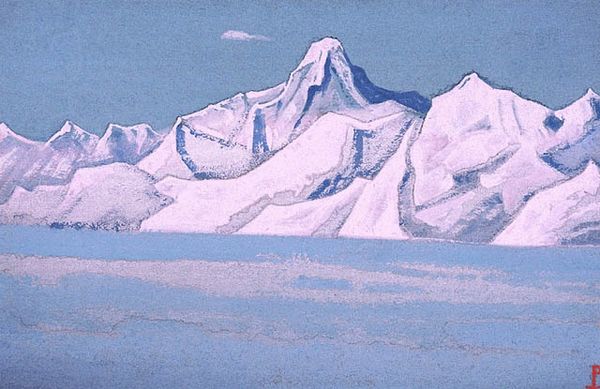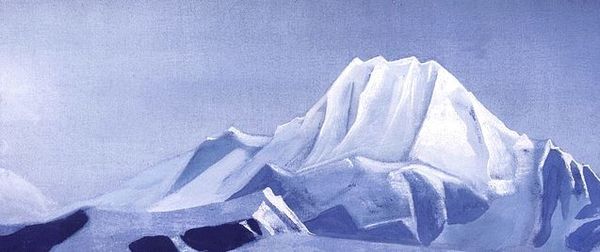
Copyright: Public domain
Editor: We're looking at "Himalayas," painted in 1944 by Nicholas Roerich using oil paints. There’s a certain serenity to the work; the muted blues and whites create a very calming landscape. How do you interpret this piece, focusing on its artistic properties? Curator: Immediately striking is the emphasis on the structural components within this painting. Observe the carefully layered planes that construct depth, moving the eye from the darker foreground peaks to the ethereal, almost cloud-like, mountaintop. How would you describe the interplay of color? Editor: Well, it's primarily a monochromatic palette, different shades of blues create a sense of atmosphere. The application seems almost deliberately flattened, moving away from realism towards something more symbolic. Curator: Precisely. The formal restraint is noteworthy. Consider how the artist utilizes line—or perhaps the avoidance of distinct lines—to suggest form, rather than explicitly define it. Do you find that contributes to the symbolic reading you propose? Editor: I do, yes. It's almost like a study in contrasts: the solid geometry of the mountains versus the vague, atmospheric sky. This generates a rather fascinating visual tension. Curator: Precisely. The genius lies in the arrangement, the modulation, and the formal qualities that elevate the work beyond a mere depiction into the realm of the transcendental. Editor: It’s fascinating how simply dissecting the components of colour and structure brings out so much in what appears, at first glance, to be a serene, albeit basic landscape. Curator: Indeed. By understanding these elements, we unlock the potential of abstract forms to create meaning and emotional impact.
Comments
No comments
Be the first to comment and join the conversation on the ultimate creative platform.
